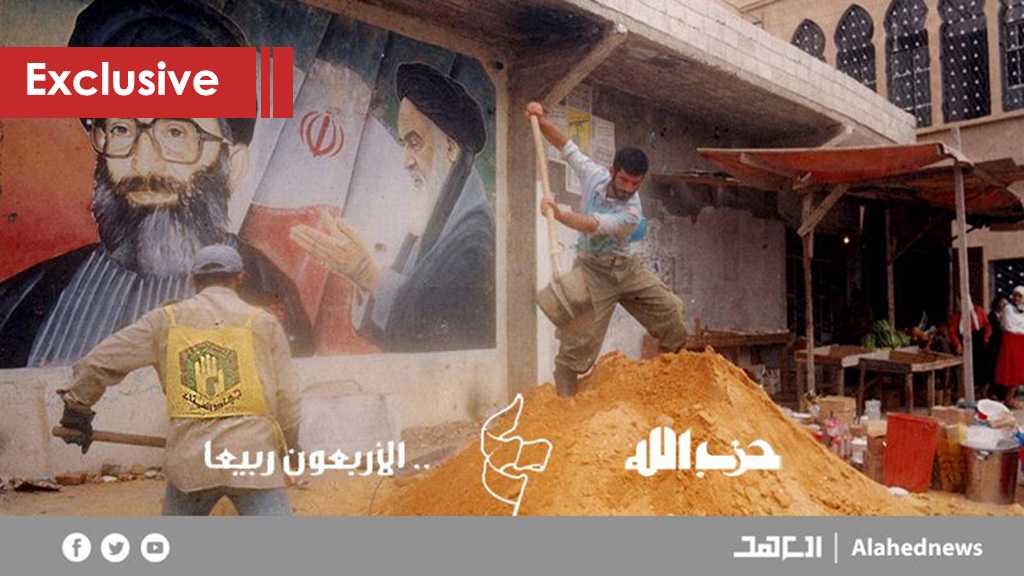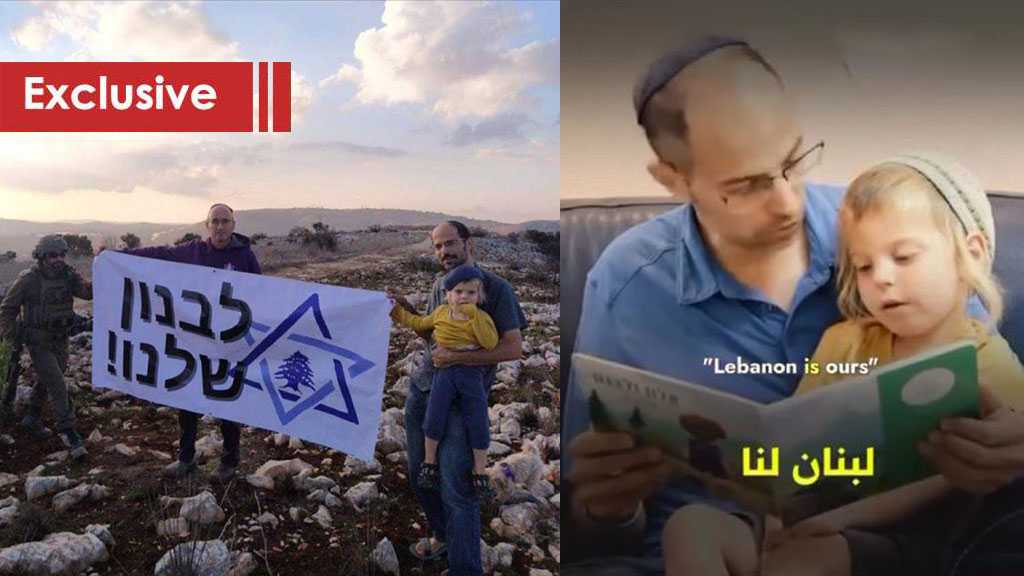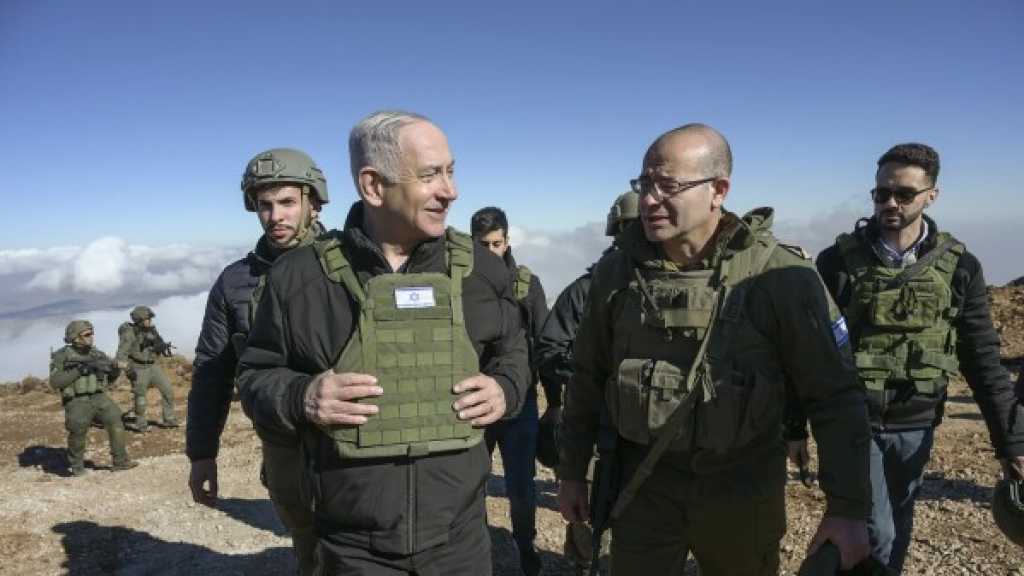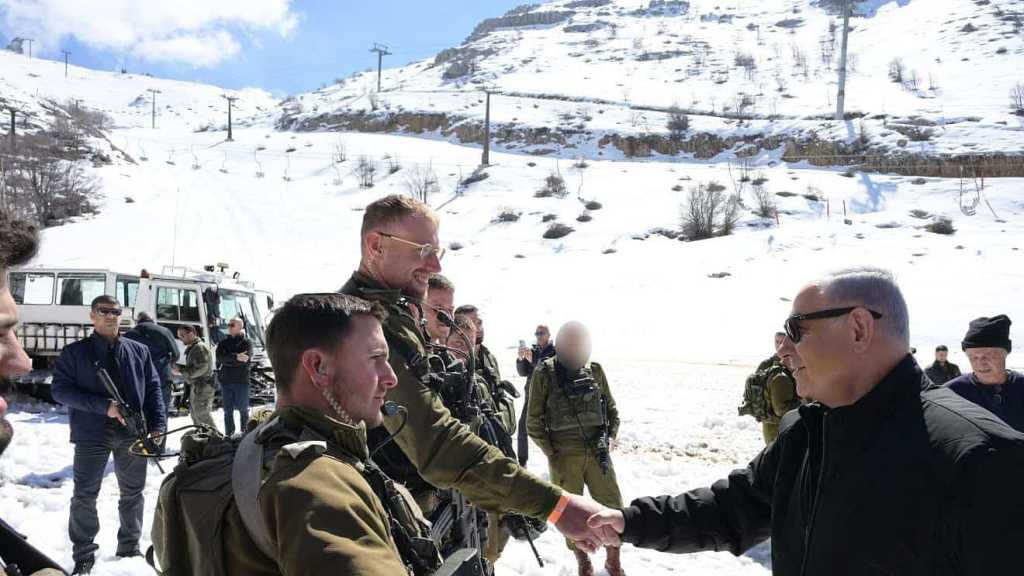Jihad al-Bina: A Development from The Womb of The Resistance

By Hassan Shreim
Beirut – Harsh political and security conditions ravaged Lebanon following the outbreak of the civil war and its aftermath.
Years later, matters worsened with the “Israeli” invasion of the capital Beirut in 1982.
This was a bitter reality. There was a complete absence of the state and poverty deepened in the historically forgotten Lebanese areas, especially in the Beqaa, the south, and the north. As the resistance movement emerged to face the “Israeli” enemy, it was necessary to unite the mighty and unwavering efforts to help our dear people and meet their needs, as well as reduce the dangers resulting from occupation and war.
This paved the way for the integration of jihad and construction, giving rise to the Jihad Al-Bina Development Association.
The birth of Jihad Al-Bina
Jihad al-Bina is a resistance development organization that was officially established in 1988. Its goal is to help alleviate the consequences of the Lebanese civil war and resist the “Israeli” occupation by supporting people and construction.
In an interview with al-Ahed News, Jihad al-Bina General Director Eng. Muhammad Al-Khansa tells us about the institution and its abilities.
“The early days of the institution go back to the late 1980s. They appeared clearly and practically after the horrific explosion and massacre in Bir al-Abed on March 8, 1985 in an area in the southern suburbs. It claimed the lives of more than eighty martyrs, including men, women, children, and fetuses. So, many engineers, as well as interested and experienced people combined their efforts to heal the wounds and embrace people morally and materially so they can overcome the devastation and destruction left by the massacre. They set up reconstruction workshops and provided aid to those affected and the needy.”
Jihad al-Bina keeps up with development projects and the progress
According to al-Khansa, the official establishment of the association in 1988 was followed by “the concept of work while functional and voluntary work within the institution developed. The institution began keeping pace with people's daily and living needs.”
“The aid was increased to include other projects, most notably: securing electricity in some remote places and water by digging wells, extracting water from them, and delivering it by extending pipelines to people’s homes and shops. Among those projects was the Al-Abbas Project for drinking water, which is still ongoing today. Jihad al-Bina also worked to remove garbage from the southern suburbs of Beirut in the absence of state services and interest in many cities, villages, and towns.”
Within the framework of the Jihad al-Bina’s focus on the development of its projects, a delegation visited the Islamic Republic of Iran. It was inspired by the experience of Imam Khomeini in Iran and was briefed on many development plans and projects. It applied the experience in Lebanon and commenced with plans and projects that were suitable for the country and its people.
Al-Khansa recalls that "work was at its peak along the border areas at the time of the ‘Israeli’ occupation of the villages and towns of the south, when the enemy was bombing public facilities, homes, and roads and practicing its hostile and brutal acts. Work was continuing despite all the dangers and threats."
Its services program was accompanied by many sacrifices while the Association carried out its developmental duty towards its people in the homeland, especially during the occupation era and along the Lebanese border with occupied Palestine. Many of those working with Jihad al-Bina were martyred as a result of the “Israeli” attacks. Others were wounded by mines and cluster bombs left behind by the “Israelis”.
Al-Khansa stresses that nothing deterred Jihad al-Bina from continuing its work; the blood of its martyrs was a motivation for strength, determination, and the will to face challenges and move forward in keeping pace with the needs of the villages and their people. The focus at that stage was on building houses and restoring those damaged as a result of the repeated “Israeli” shelling on Lebanon and the border areas.
Between 1988 and 1997, Jihad al-Bina restored 1,500 housing units damaged by the Zionist attacks, in addition to building and rehabilitating 42 schools.
Between 1999 and 2000, 57 vocational training courses and 142 agricultural extension courses were conducted, in addition to the establishment of the Farmer Relief Project: the distribution of cows and Varroa strips for bee disease to 3,763 parties.
Pivotal junctions in the work of Jihad al-Bina
Al-Khansa remembers pivotal junctions in Lebanon, in which Jihad al-Bina played a major role:
- The first is the Seven-Day War, which “Israel” dubbed Operation Accountability in July 1993. "Israel" relied mainly on its air force to dismember the Lebanese areas, so it separated the south from the capital Beirut and the Bekaa region from the west and north through a dense belt of fire.
- The second juncture, according to Al-Khansa, is the April 1996 aggression. It was a quick and barbaric military attack on Lebanon that lasted for sixteen days, in which hundreds of civilian were killed and wounded.
- As for the historical juncture, which was engraved in the memory of the homeland in Al-Khansa’s opinion, came on May 25, 2000, the Resistance and Liberation Day. It was the day the “Israeli” army was defeated and withdrew from most of the Lebanese territories it had been occupying since 1978.
Al-Khansa adds that after the liberation and the return of citizens to their villages, Jihad al-Bina’s work to meet people’s needs continued. Its interests and efforts expanded from restoration to the agricultural sector through land reclamation and encouraging people to invest, plant, and sell the surplus of its crop, especially in the south and the Bekaa, where there are vast areas and fertile lands that are suitable for agriculture and investment.
The July War: Massive missions and a pivotal juncture in the association's history
Al-Khansa said the pivotal and most important juncture was the July 2006 war on Lebanon or what was known as the Second Lebanon War, when “Israeli” barbarism became more intense and exacerbated destruction and devastation. It did not spare people or stones. The human and material losses were extensive. People were martyred and displaced. Those who were displaced left behind memories only to return after the war and find them in ashes.
Indeed, the Jihad al-Bina organization has proven that it is responsible. It surprised the enemy and friends alike with the tremendous efforts it made to rebuild and provide shelter for those displaced returning to their destroyed homes. As part of its project to provide shelter, it provided them with rent and furniture allowances until the rubble removal operations were completed.
The reconstruction carried out by the association covered all the villages and cities that were destroyed. It built the destroyed houses and restored damaged ones, making them even lovelier than they were before the destruction.
July 2006 war:
1- Inspection: 1386 buildings
2- Structural restoration: 150 buildings
3- Demolition after inspection: 83 buildings
4- Partial demolition: 15 buildings
5- Demolished buildings: 195 buildings
6- Restoration of common sections: 943 buildings
Jihad al-Bina agricultur and industry (2020 - 2021)
To complement its development projects and in support of the agricultural sector, the association established several centers to serve as starting points for agricultural development. These centers are:
1- Martyr Sayyed Abbas Al-Moussawi Center for Agricultural Development and Extension in Duris - Baalbek (destroyed in the 2006 war)
2- Imam Al-Jawad Center for Agricultural Development and Extension in Hermel
3- Abi Dhar Al-Ghafari Center for Agricultural Development and Extension in Dardaghiya - Tyre
4- Al-Firdous Center for Agricultural Development and Extension in Al-Firdous in Nabatiyeh
These centers were able to keep pace with farmers’ activities, meet their needs, encourage them to grow, and market their agricultural products in various areas, including online. They conducted a number of agricultural projects and fairs, including nearly 76 fairs, where 2478 people benefited. Some of these fairs are:
1 - Hakoura Project (rehabilitation for home farming):
- Distribution of 75,000 boxes of summer seeds
- Beneficiaries: 26720
- Cultivated area: 120000 acres
- Combined courses: 200 courses / Number of beneficiaries: 15238
- Electronic counseling courses: Number of beneficiaries: 268322
2- Ghallal Project:
- Distribution of 80 tons of wheat seed
- The cultivated area is 5350 acres
3- Afforestation project:
- Distribution of 150,000 implants to benefit 4,000 parties
- Distribution of 1000000 seedlings to benefit 1233 parties
4- Livestock vaccination project:
- Immunization of 2038,157 head of livestock to benefit 10,696 parties
5- Livestock Credit Project:
- 560 head of cattle annually
- A number of areas benefited from it, especially in the north and Akkar.
6- Electronic agricultural extension seminars: number of beneficiaries 6260
7- Agricultural Extension Project [electronic]: Number of beneficiaries: 142924
8- Providing agricultural supplies: Number of beneficiaries: 87825
9- Environmental guidance and awareness: Number of beneficiaries: 113,878
10- Field and veterinary tours: 54989, number of beneficiaries: 57705
Agricultural extension projects or animal and plant production are still in constant development, as Jihad al-Bina worked to conduct a census of more than 10170 farmers so far. In a new step, the association is seeking to market products online.
Accelerated vocational and handicraft training project
As part of its rehabilitation program, Al-Khansa points out that the Jihad Al-Bina Association also seeks to establish craft workshops and training courses in its main or subsidiary centers in villages and towns or through mobile centers in the areas. Their aim is to shape the individual and help him acquire a new craft or profession that will be a source for a decent paycheck, especially in light of the current situation.
Between 2020-2021, 4211 professional and craft courses and workshops were held. 102031 trainees benefited from them. A census for more than 3500 professionals and craftsmen has been conducted so far.
The association also paid attention to the cooperative sector, as it worked on establishing, rehabilitating, and assisting more than 400 diverse cooperatives in various Lebanese areas.
Among the fairs that Jihad Al-Bina carried out to encourage craftsmen and producers was the Ardi Exhibition. Ardi supports small producers and craftsmen to market their products. It was last held in the southern suburbs of Beirut in 2019 before the coronavirus pandemic. About 3496 people participated in the exhibition.
In addition, there are mobile markets in the south, the Bekaa, and other areas: about 39 markets, benefiting 1613 people.
Ongoing achievements & the door for volunteering is open to all
Al-Khansa commends the efforts of the administrative staff and “the whole family” in the Jihad Al-Bina Association. He praises the efforts of volunteers who join the association from various specializations and categories based on the sectors and files that the association is working on. He stresses that Jihad al-Bina’s doors are open to all, thanks to God and “hand in hand and with the charitable people, we will continue our work and carry on."
Comments




